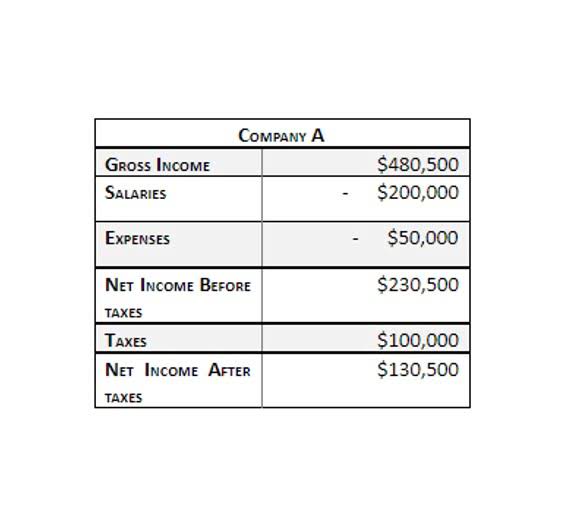
The effective interest method stands out as a preferred approach due to its precision in reflecting the true cost of borrowing over time. The primary advantage of using the effective interest rate is that it’s a more accurate figure of actual interest earned on a financial instrument or investment or of actual interest paid on a loan. The amount of interest expense in a given accounting period thus correlates with a bond’s book value at the beginning of an accounting period.
Create a Free Account and Ask Any Financial Question
- The effective interest method of amortization begins by assuming that all payments are invested at an annual rate for the full period that they are outstanding.
- The following table summarizes the effect of the change in the market interest rate on an existing $100,000 bond with a stated interest rate of 9% and maturing in 5 years.
- At Finance Strategists, we partner with financial experts to ensure the accuracy of our financial content.
- The initial journal entry to record the issuance of the bonds, and the final journal entry to record repayment at maturity would be identical to those demonstrated for the straight-line method.
- In this case, the more frequently interest is added to your money, the more interest that is earned on interest, meaning you get even more money.
As the bond’s carrying amount decreases (in the case of a premium) or increases (in the case of a discount), the interest expense calculated using the effective interest rate will correspondingly decrease or increase. This dynamic adjustment ensures that the interest expense recognized in each period accurately reflects the bond’s amortized cost, maintaining consistency in financial reporting. The effective annual rate calculator is an easy way to restate an interest rate on a loan as an interest rate that is compounded annually. You can use the effective annual rate (EAR) calculator to compare the annual effective interest among loans with different nominal interest rates and/or different compounding intervals such as monthly, quarterly or daily. Effective annual rate (EAR), is also called the effective annual interest rate or the annual equivalent rate (AER). The effective interest rate method reflects the economic substance of a transaction better.
What is effective interest rate?
Put another way, the effective interest rate is equal to the nominal return relative to the actual principal investment. In terms of accounting for bonds, the effective interest rate is the same as a bond’s yield at the issue date. For example, assume a 10-year $100,000 bond is issued with a 6% semiannual coupon in a 10% market. Therefore, the bond discount of $5,000, or $100,000 less $95,000, must be https://www.bookstime.com/ amortized to the interest expense account over the life of the bond. Interest expense is calculated as the effective-interest rate times the bond’s carrying value for each period. The amount of amortization is the difference between the cash paid for interest and the calculated amount of bond interest expense.
What is your current financial priority?
- Our mission is to empower readers with the most factual and reliable financial information possible to help them make informed decisions for their individual needs.
- Consequently, as a bond’s book value increases, the amount of interest expense increases.
- Some examples of Working Capital are cash, Accounts Receivable, inventory, and prepaid expenses.
- In this table, the effective periodic bond interest expense is calculated by multiplying the bond’s carrying value at the beginning of the period by the semiannual yield rate, determined at the time the bond was issued.
- As the bond matures, the carrying value decreases, resulting in a lower interest expense each year.
As the table shows, the interest for each period is $6,702 and the total over the 10 periods is $67,024 under the straight-line method. Due to the straight-line method’s conceptual problem, the Financial Accounting Standards Board (FASB) requires the use of the effective interest method unless there are no material differences between the two. Our mission is to empower readers with the most factual and reliable financial information possible to help them make informed decisions for their individual needs. If this is the case, accepted accounting principles require that you should use effective interest amortization. This calculator is especially useful for figuring out the real cost of credit-card borrowings.
What is the effective interest rate of 12% compounded monthly?
Therefore, the interest rate is constant over the term of the bond, but the actual interest QuickBooks expense changes as the carrying value of the bond changes. The best way to illustrate the difference between nominal vs. effective interest rate is to take a real-world example. When you have a nest egg or investment, however, the effect of compounding becomes your friend. In this case, the more frequently interest is added to your money, the more interest that is earned on interest, meaning you get even more money. Therefore, the higher the compounding frequency, the higher the future value (FV) of your investment.

The difference between coupon/interest paid and premium amortized is amortization to carrying the value of a bond. At maturity, the carrying amount of the bond will reach the par value of the bond and is paid to the bondholder. Suppose a 5-year $ 100,000 bond is issued with a 6% semiannual coupon in an 8% market $ 108,530 in Jan’17 with interest payout in June and January. The effective interest rate of 12%, compounded monthly, is approximately 12.683%, with a periodic rate of 1%. If you’re looking for an easy way to calculate the effective interest rate, use Omni Calculator’s effective interest rate calculator. The effective interest method of amortization is a technique used to allocate interest expense over the life of a loan or bond.
Discount Example
- These tools not only streamline the process but also provide detailed reports that can be used for internal analysis and external audits, enhancing transparency and accountability.
- When a bond is sold at a discount, the amount of the bond discount must be amortized to interest expense over the life of the bond.
- When a bond fluctuates in price from its par value, it impacts the actual interest rate paid by the bond, known as the effective interest rate.
- In terms of accounting for bonds, the effective interest rate is the same as a bond’s yield at the issue date.
- A bond premium occurs when investors are willing to pay more than the face value of a bond, because its stated interest rate is higher than the prevailing market interest rate.
- The effective interest method of amortization is a process used to allocate the discount or premium on bonds, or other long-term debt, evenly over the life of the instrument.
Alternatively, the bond’s carrying value on 1 July 2020 effective interest amortization method calculator is equal to the unamortized discount of $6,516. Finally, the unamortized discount of $6,516 on 1 July 2020 in Column 5 is equal to the original discount of $7,024, less the amortized discount of $508. The bond’s carrying value in Column 6 is thus increased by $508, from $92,976 to $93,484. In the premium example, the same conceptual problem occurs, except that the percentage rate continuously increases as the carrying value of the bond decreases from $107,722 to $100,000. The interest expense based on straight-line amortization for the period between 2 January 2020 and 1 July 2020 is $6,702.

How does the effective interest method work?

The complexity of this method, however, requires a more detailed understanding of financial principles and more sophisticated calculations, which can be a drawback for entities with limited accounting resources. The initial carrying amount is less than the face value, and the effective interest rate is higher than the nominal rate. As interest is accrued, the carrying amount increases due to the amortization of the discount. This increase in the carrying amount results in a higher interest expense in subsequent periods, aligning with the bond’s yield to maturity.

This means that as a bond’s book value increases, the amount of interest expense will increase. When it comes to managing finances, understanding the various methods of amortization is crucial. This method is widely used in accounting and finance to allocate interest expense over the life of a loan or bond. In this article, we will delve into the details of the effective interest method of amortization, its benefits, and how it is calculated.
